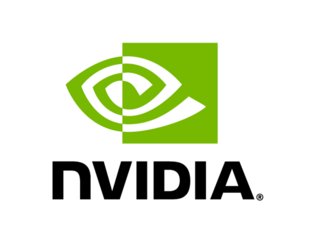Nvidia: transforming industries with pioneering AI tech

Founded in 1993, Nvidia is one of the leading artificial intelligence companies and pioneers of accelerated computing to tackle challenges ordinary computers fail to overcome. The company, which is based in Santa Clara, California, designs graphics and processing units (GPUs), application programming interfaces (APIs).
Scientists, researchers, developers and creators rely on Nvidia and its products, currently, more than 2.5 million developers and 8,500 startups create thousands of applications for accelerated computing. To date, the company has shipped more than a billion CUDA-based GPUs.
A global leader in artificial intelligence, Nvidia supports a number of industries and has expanded its presence in the gaming industry by releasing handheld games consoles and Nvidia RTX.
20 years ago, the company redefined real-time computer graphics with programmable shading GPUs and with Nvidia RTX, the company has reinvented computer graphics with a new rendering approach.
This approach fuses rasterisation and programmable shading with ray tracing and AI to make PC games look much more realistic to the point of being almost cinematic.
Now, RTX has come to be the world’s best-selling video game, Minecraft and before RTX, game developers had to pre-render lighting and shadow effects to make their worlds more realistic.
On top of this, Nvidia Ampere architecture-powered devices deliver ray-traced graphics with industry-best performance and successful with developers, RTX is supported by more than 15 top games and creative apps.
Nvidia Ampere is the largest 7 nanometer (nm) chip ever built and is designed for the age of elastic computing, rises to all these challenges, providing unmatched acceleration at every scale.
Commenting on the companies presence in the gaming industry, Tech Radar said: “With its series of RTX graphics cards, Nvidia is wowing the gaming world.”
Nvidia: entering the virtual world with the Omniverse
Nvidia has also created a platform for simulating and connecting to virtual worlds, Nvidia Omniverse. In the Omniverse, digital content designers can virtually meet to develop 3D content in real-time.
Obeying the laws of physics, the Omniverse can simulate particles, fluids, materials, prints and cables. With this, it is perfect for training robots, designing products and creating digital twins of buildings, factories and cities.
It not only accelerates complex 3D workflows, but also enables ground-breaking new ways to visualise, simulate, and code the next frontier of ideas and innovation. The Omniverse ecosystem continues to grow and currently its customers include Cisco, Adobe, Epic Games, Acer and Dell.
BMW is also using Omniverse to design and create its own factory of the future. The factory will be built in digital and simulated from beginning to end. This new factory is a digital twin to the one BMW will build in the future.
“Whether creating products or characters, artists and designers around the world rely on Substance by Adobe for texturing their 3D assets. Omniverse lets team members collaborate across multiple applications in real time, and we can’t wait to see the fully immersive digital environments you’ll create,” said Sébastien Deguy, VP 3D & Immersive at Adobe.
Rapidly expanding supercomputing with Nvidia
2006 saw Nvidia create its CUDA programming model and data centre GPU platform which brought parallel processing to general-purpose computing. This powerful new approach to high performance computing was set to transform industries.
As a result, the universe of supercomputing has expanded rapidly since and now incorporates AI, advanced data analytics and cloud computing.
Furthermore, the company also offers a suite of acceleration libraries created for computational drug discovery, Nvidia Clara Discovery, which can perform a number of tasks including imaging, quantum chemistry and gene variant-calling.
The library also utilises natural language processing (NLP) and AI to understand genetics and generate new drug compounds.
Recently, the company announced its next generation processors for AI computing, the H100 GPU and the Grace CPU Superchip. The new technology is basd on Nvidia’s Hopper architecture and the H100 includes a transformer engine for faster training of AI models.






